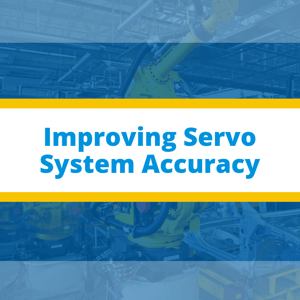 Motion control applications utilize a plethora of servomotors and machine actuators. Proper selection and integration are necessary for top-level accuracy and profitability. There are some factors that must be considered during and after the design process to ensure that the system works at peak efficiency and accuracy. The type of load, duty cycle and mechanical transmission all effect the accuracy of the system.
Motion control applications utilize a plethora of servomotors and machine actuators. Proper selection and integration are necessary for top-level accuracy and profitability. There are some factors that must be considered during and after the design process to ensure that the system works at peak efficiency and accuracy. The type of load, duty cycle and mechanical transmission all effect the accuracy of the system.
Critical Precision Motion Components
When an existing servo system is being replaced, the power ratings are usually the same, even though the size of the motor may be different. For a new application however, all factors may need to be modified, for which a sizing software is the best approach. Out of the numerous components that define a motion control system, there are eight that are given critical status:
- Servomotor
- Encoder feedback
- Motor drive
- Gearbox
- Actuator
- Motion controller
- Drive communication hardware
- Control and tuning software
The servomotor, servo drive and the encoder feedback work in conjunction and should therefore be designed as a package, with a carefully matched motor and load. Next, the actuator as a well as the material selection needs to be carried out. For instance, some applications may require stiffer materials to prevent deformations from happening.
In high-performance systems, the reflected inertia of the gearbox and/or actuator should be kept low. Ideally, there should be a 1:1 match with that of the motor, but depending on the application even a mismatch of 5:1 can be tolerated.
With the suitable servo system and actuator selected, the software and motion controller can be tuned. This would depend on the requirements, as to whether it is a single-axis or a multi-axis system, and parameters such as maximum velocity, jerk, distance and deceleration.
Selection Tools
To make the design process as simple and accurate as possible, several online tools are available from manufacturers and suppliers. Online selection guides are also provided so that the design engineer ultimately has a cohesive system that satisfies the application requirements.
The selector tools let designers input speed and torque requirements, after which they provide a compatible list of motor-gearbox combinations. Engineers may also enter torque data, or if necessary, the designer may select the desired servomotor size. Additionally, the physical orientation and gearing convention can also be entered.
More advanced selector tools also allow designers to select optimum motor for an application, calculating the required speed and torque. Once modeled, the designer gets a comprehensive document, usually along with a price quotation that can then be considered with high-level management.
Interested in learning more? Visit our website www.premierautomation.com, or talk to one of our specialists today.



.png?width=728&name=our%20solutions%20(1).png)
